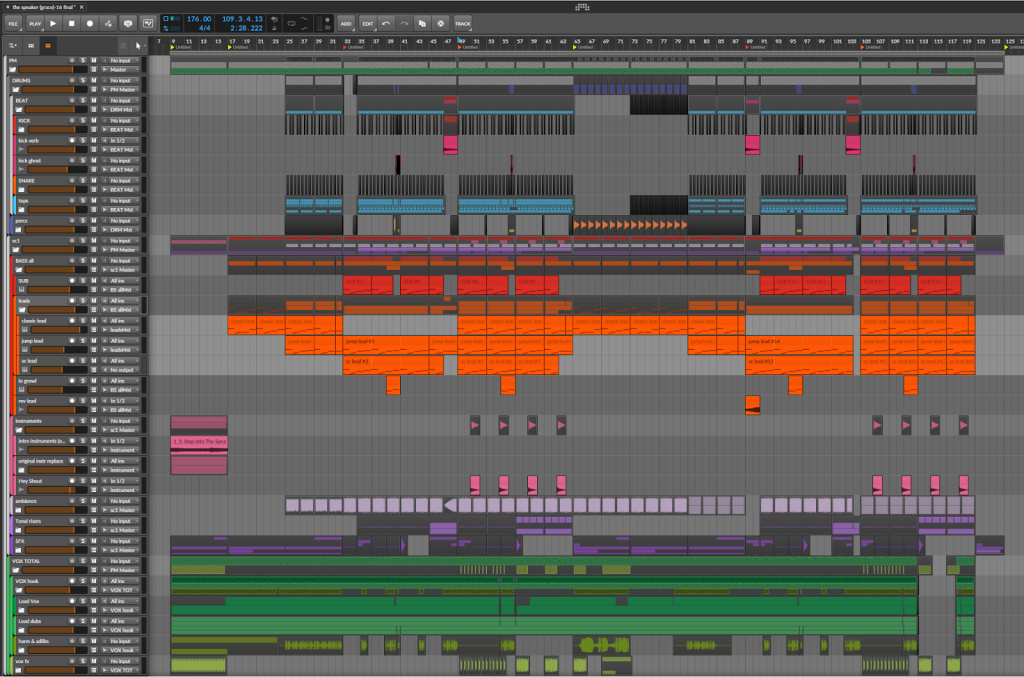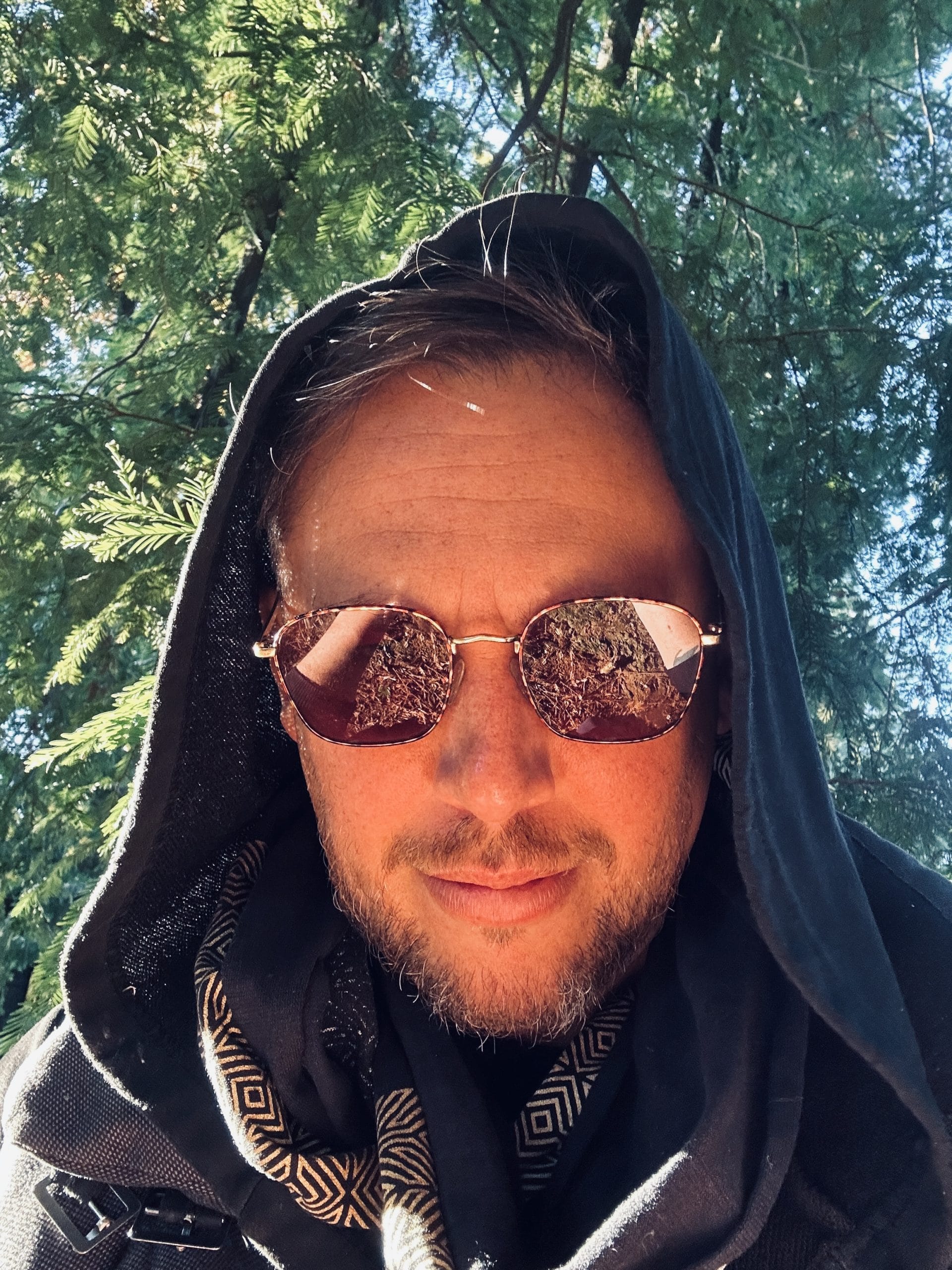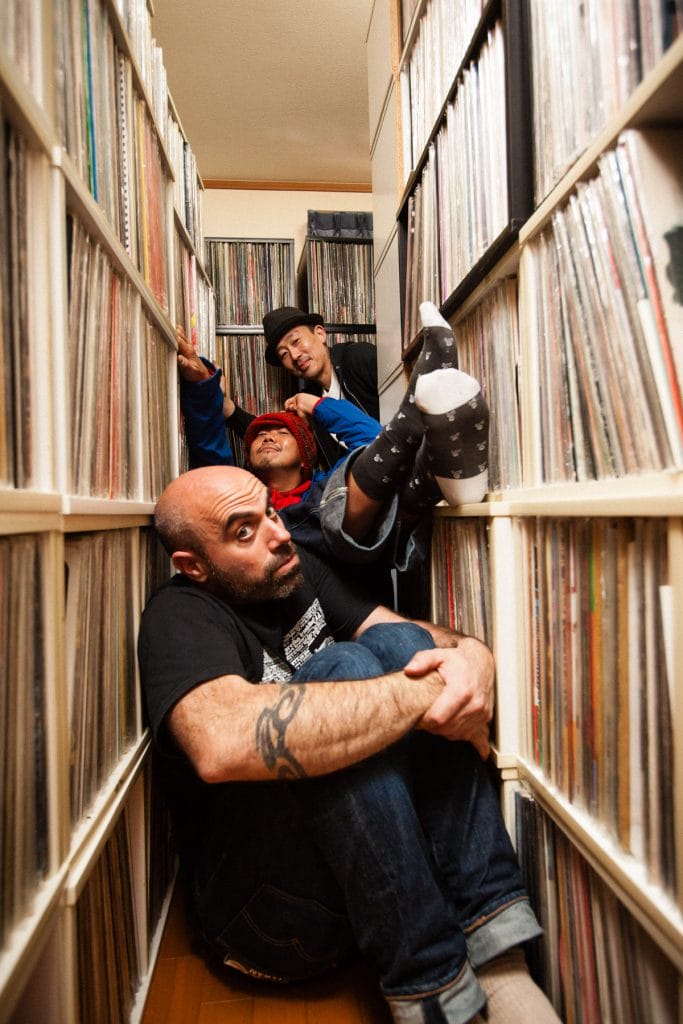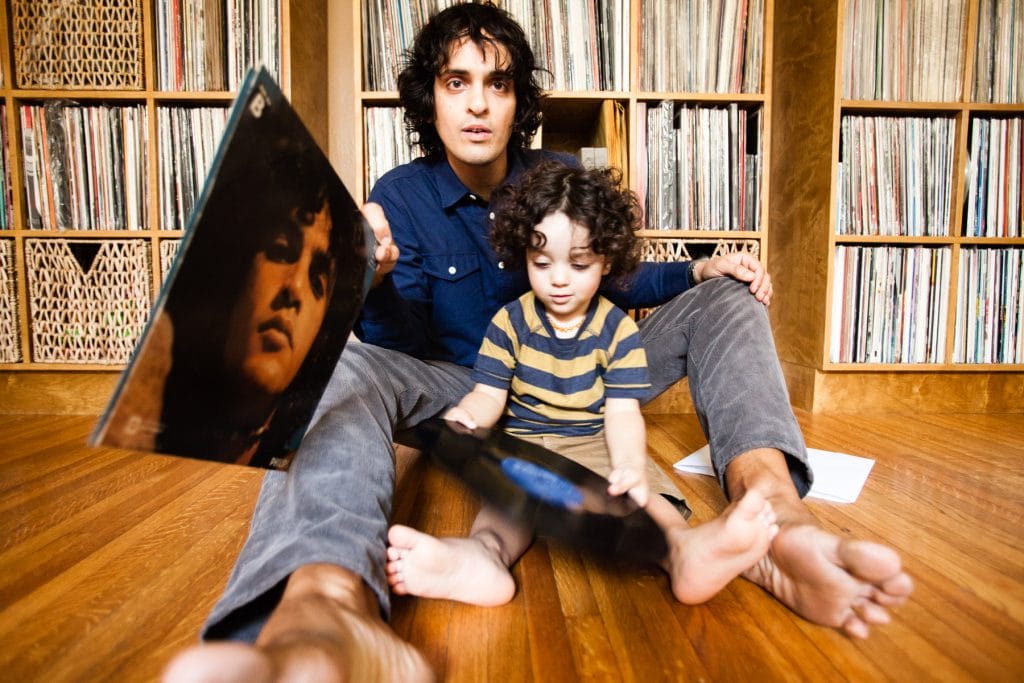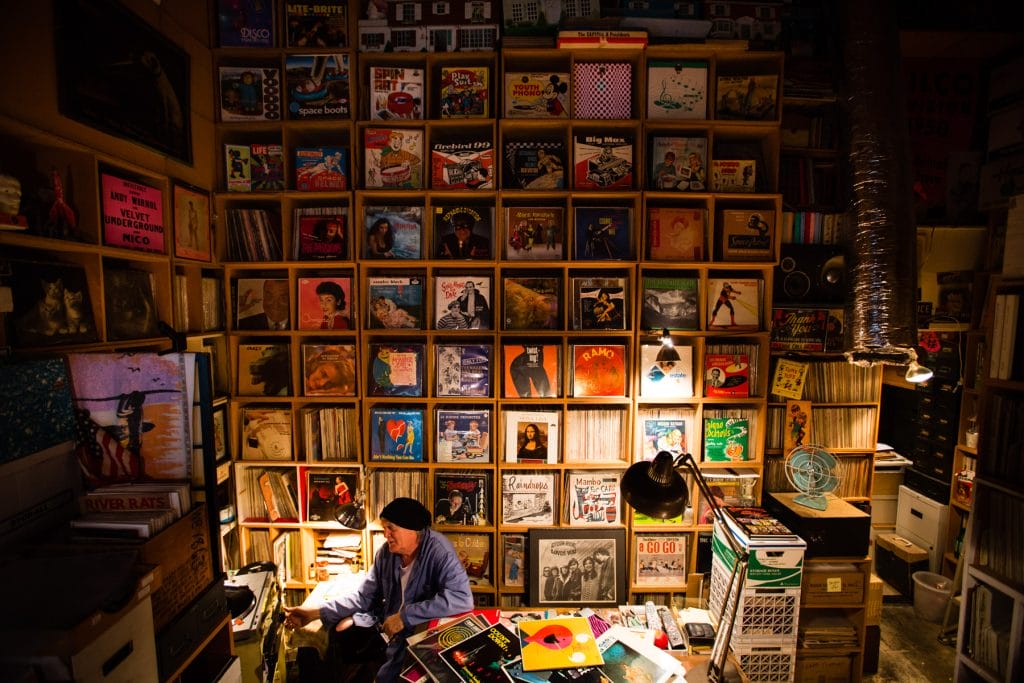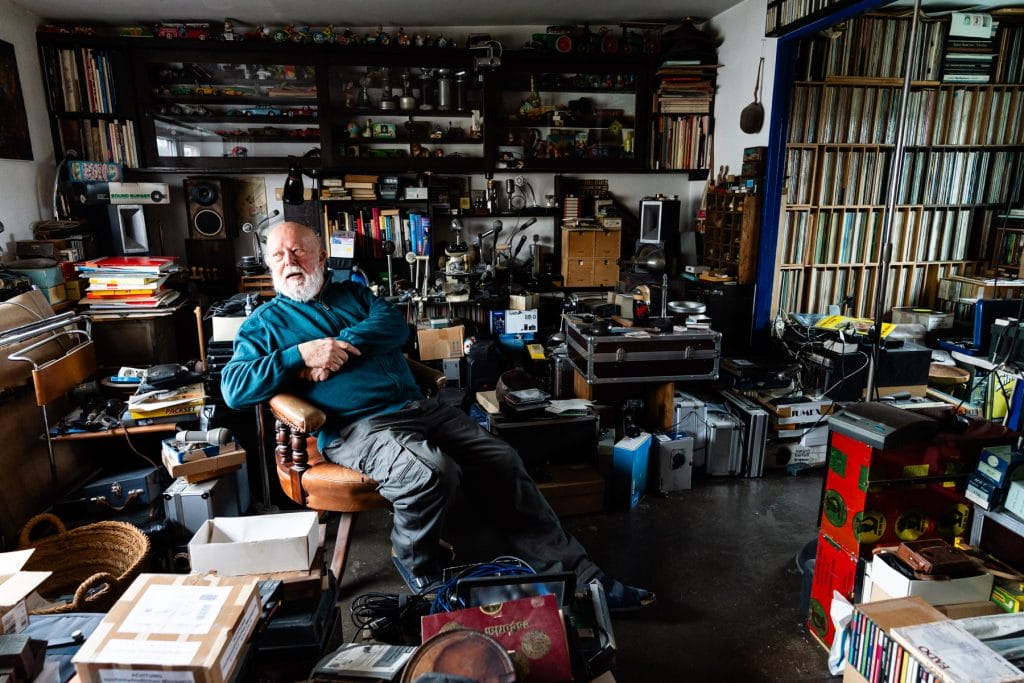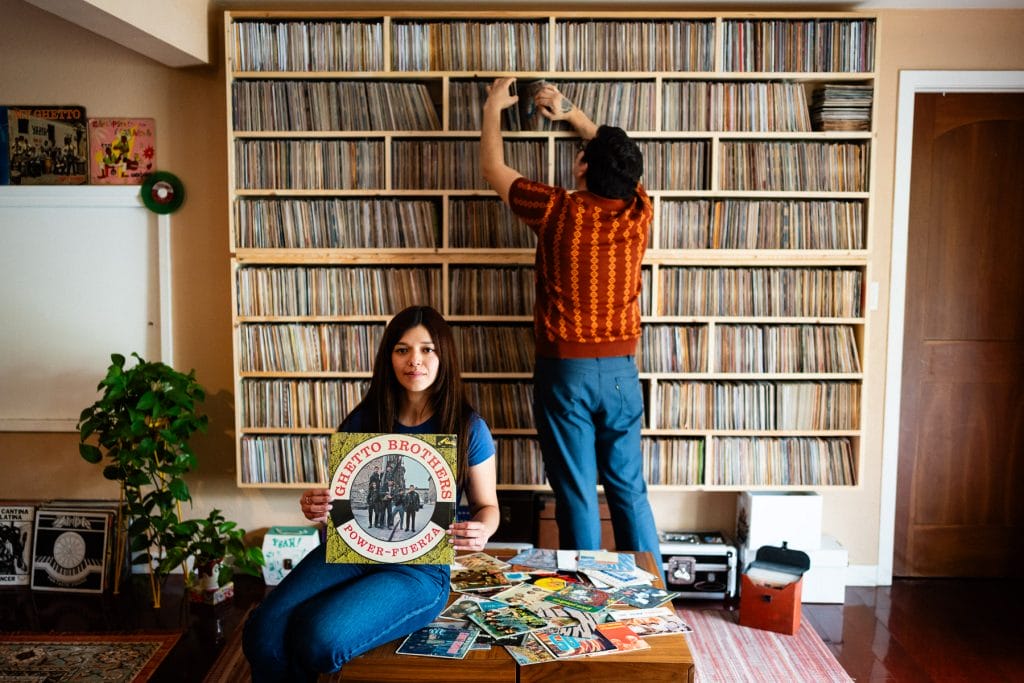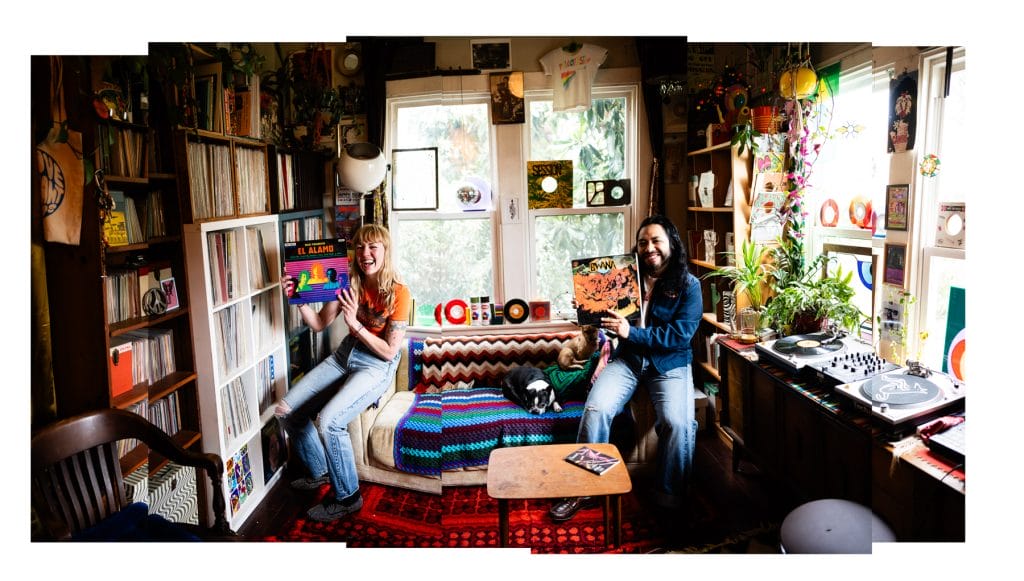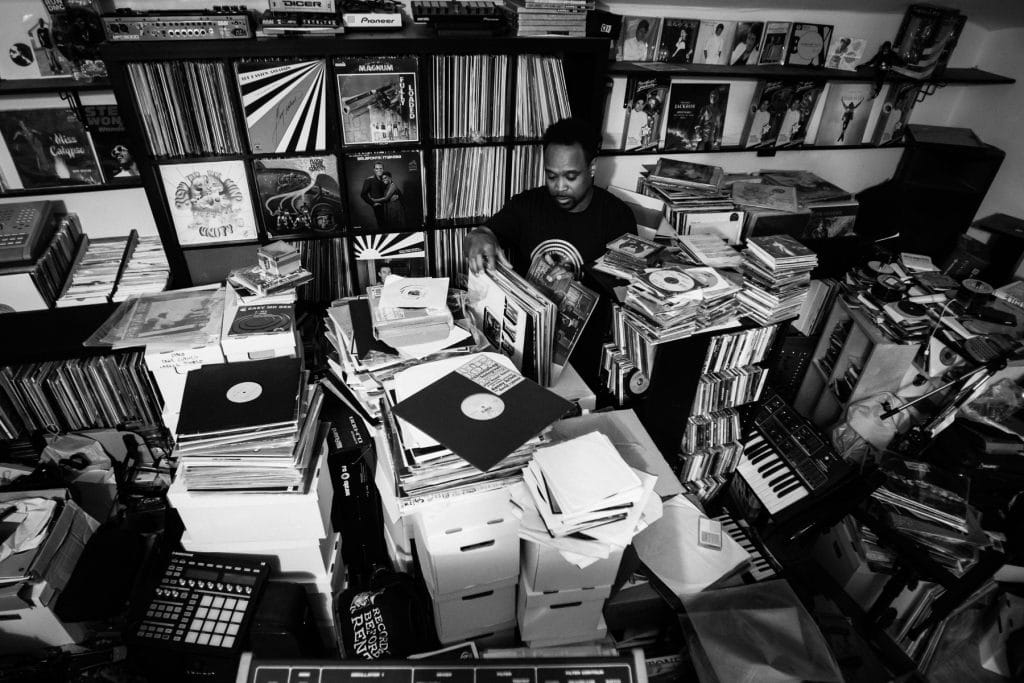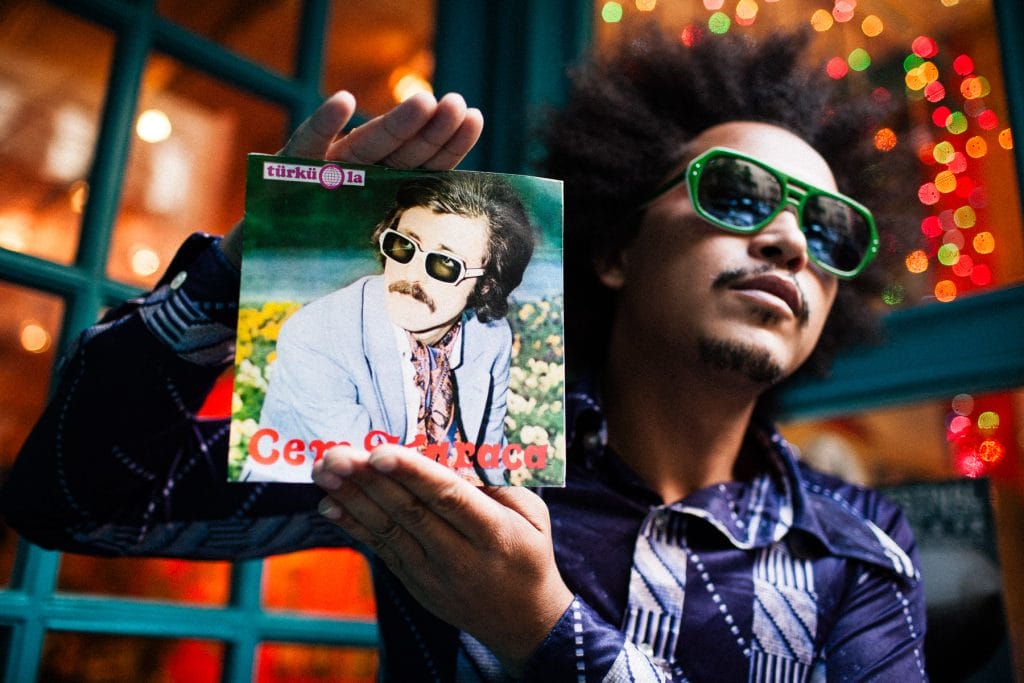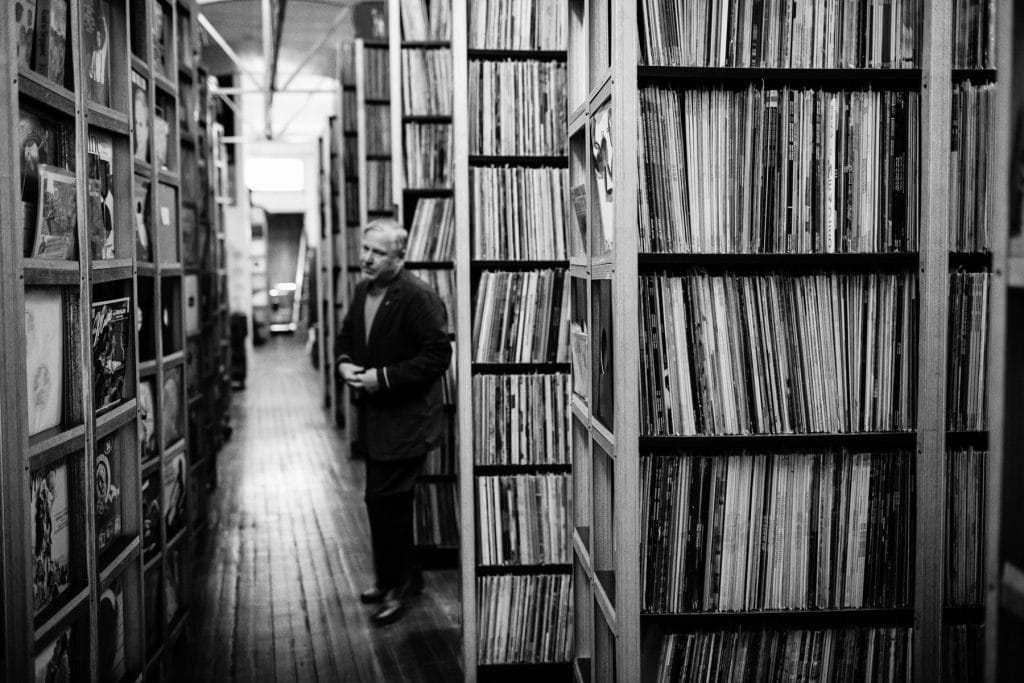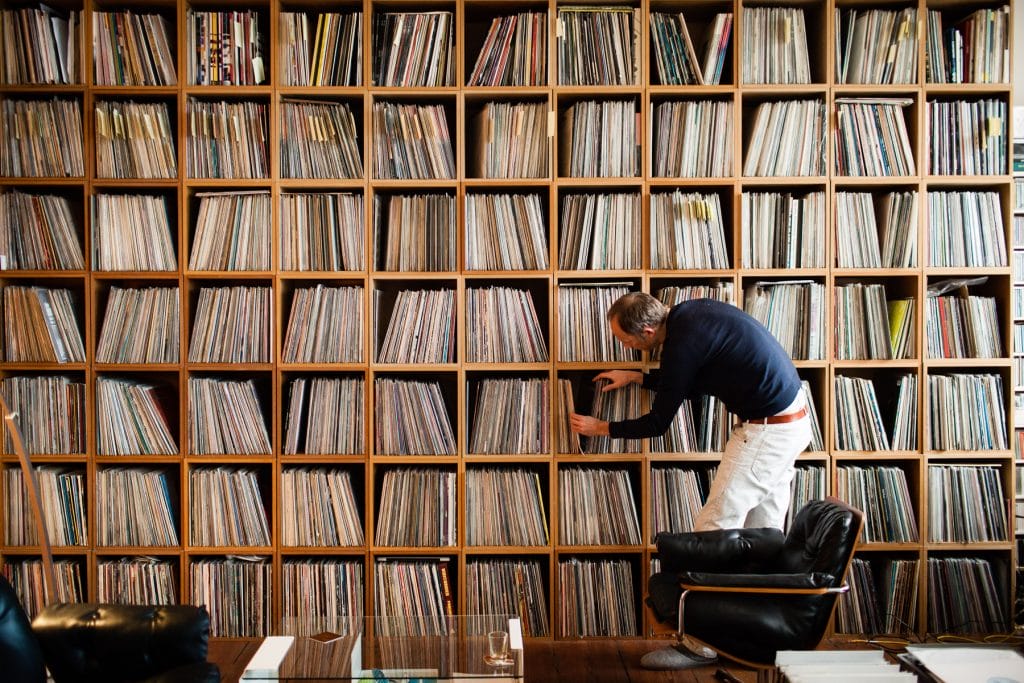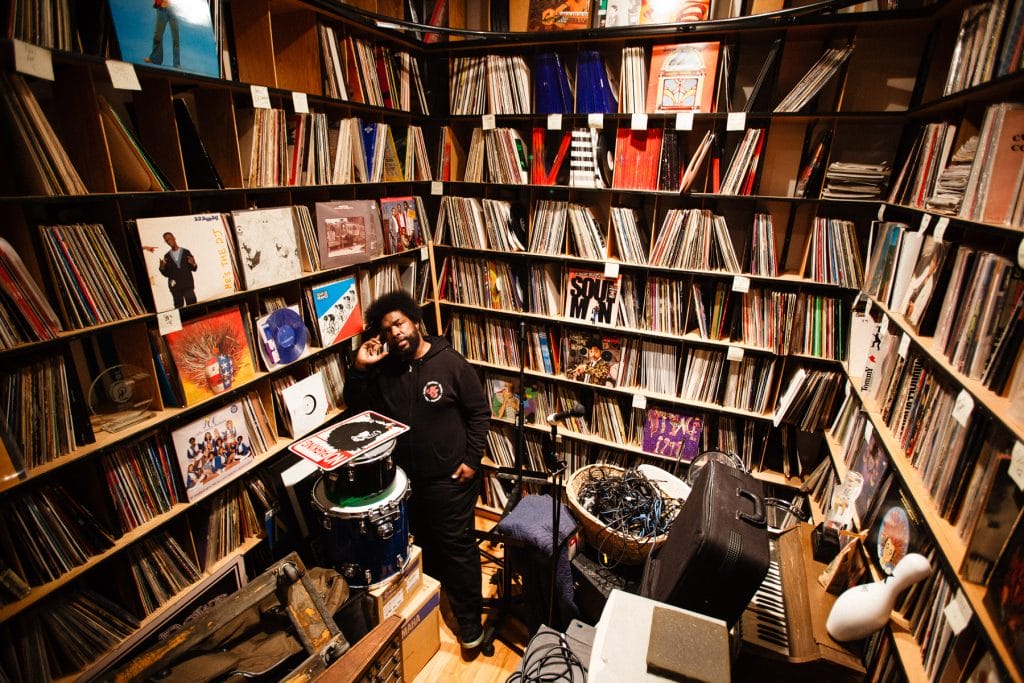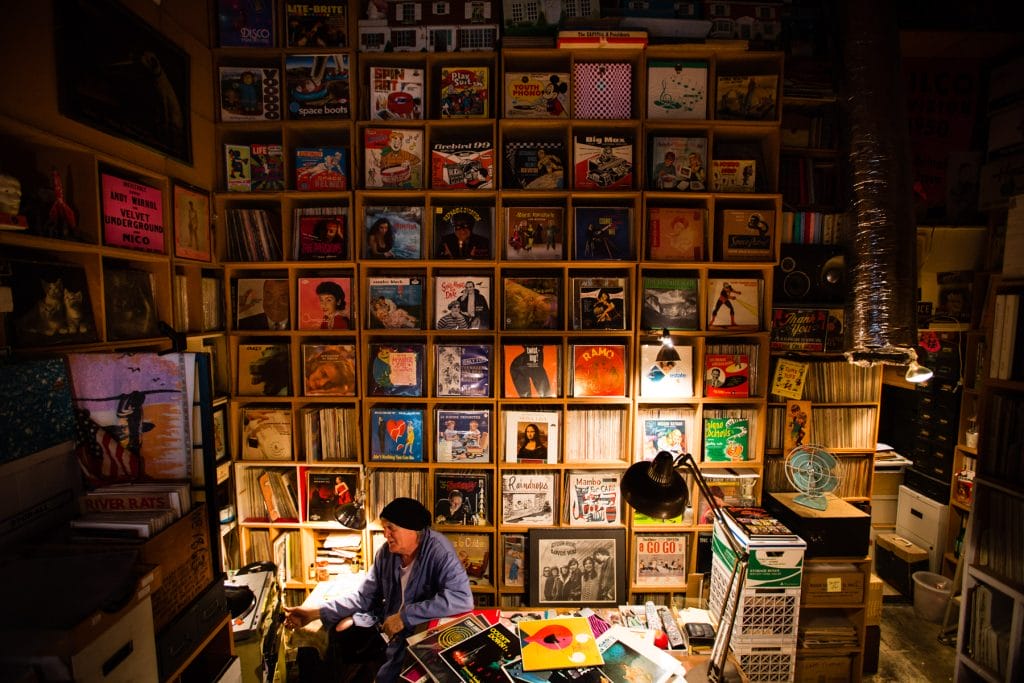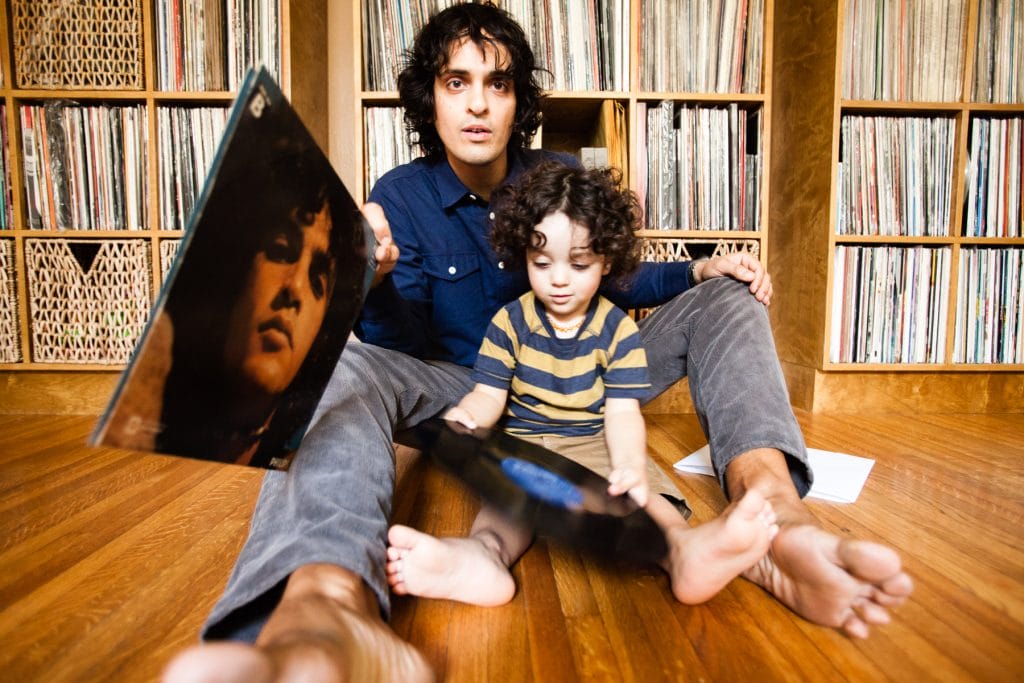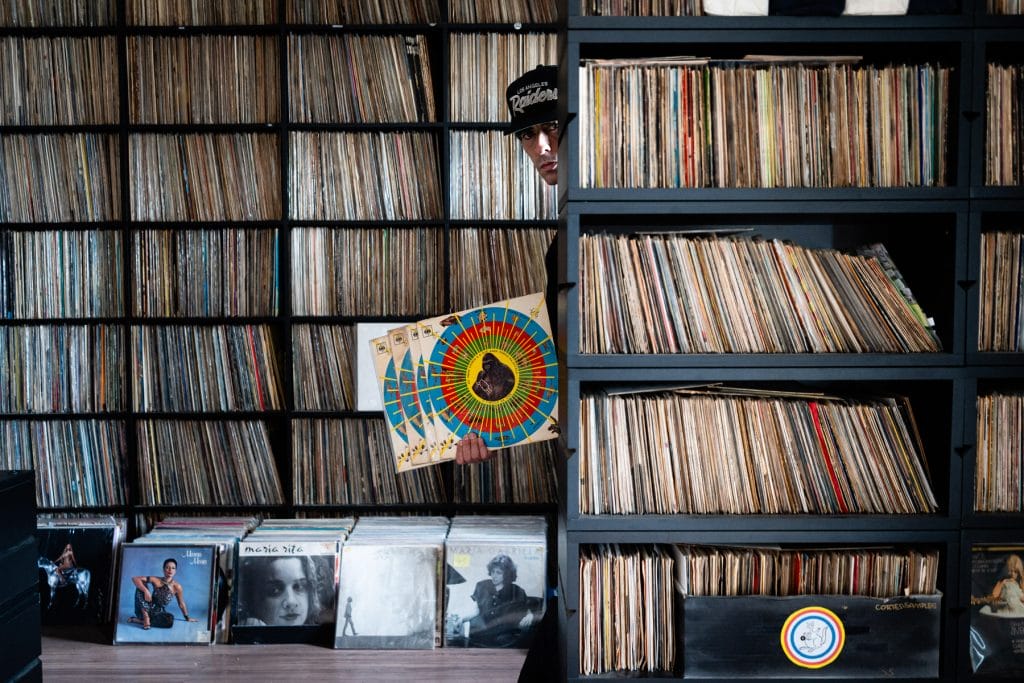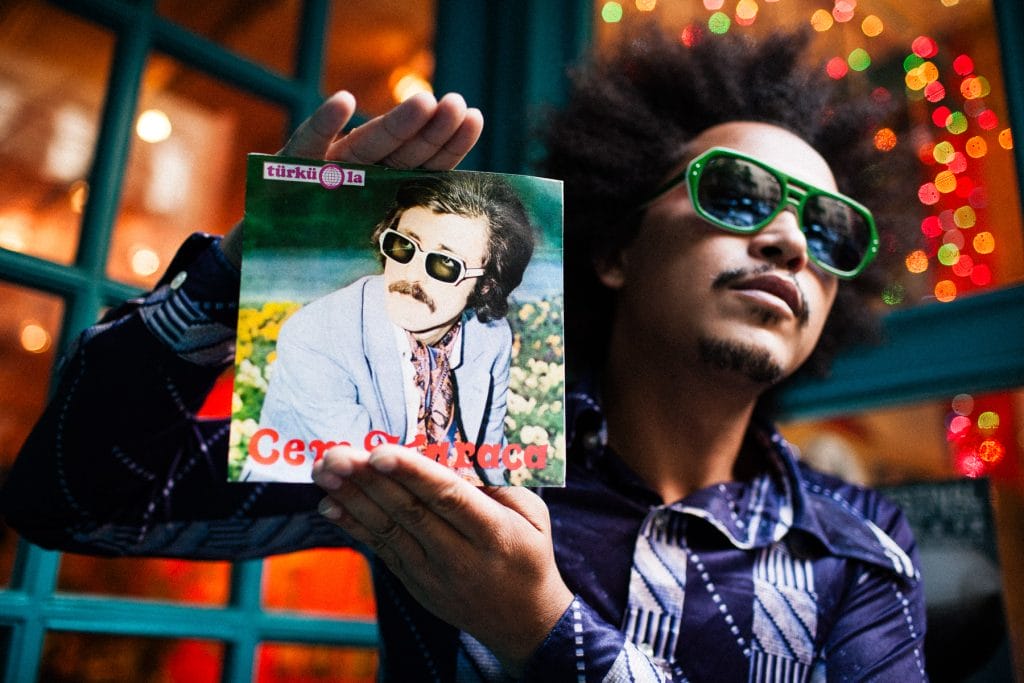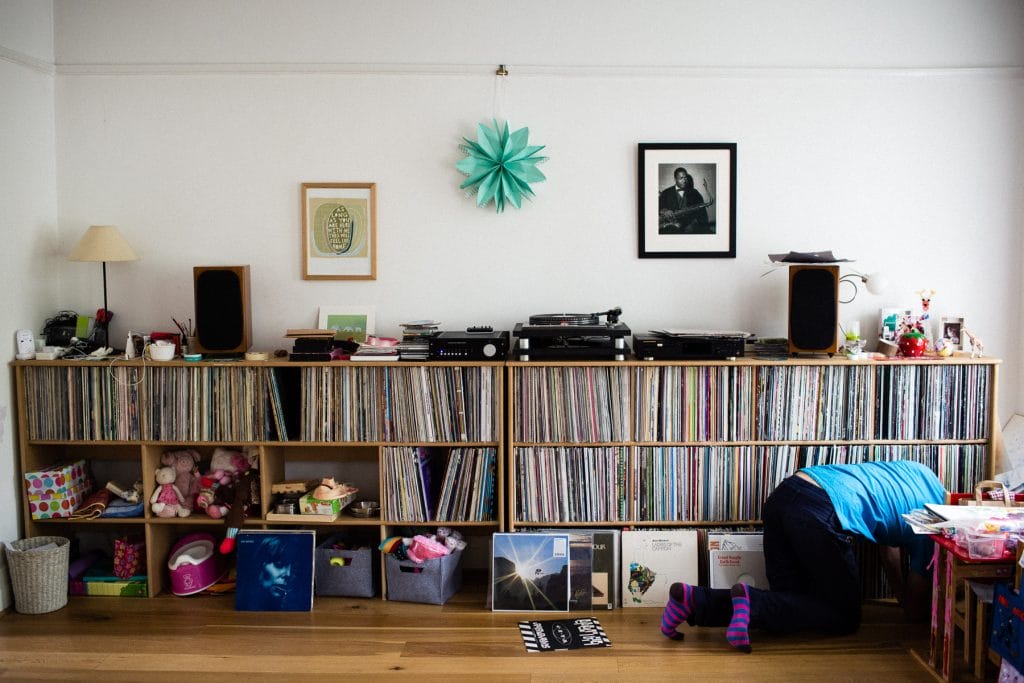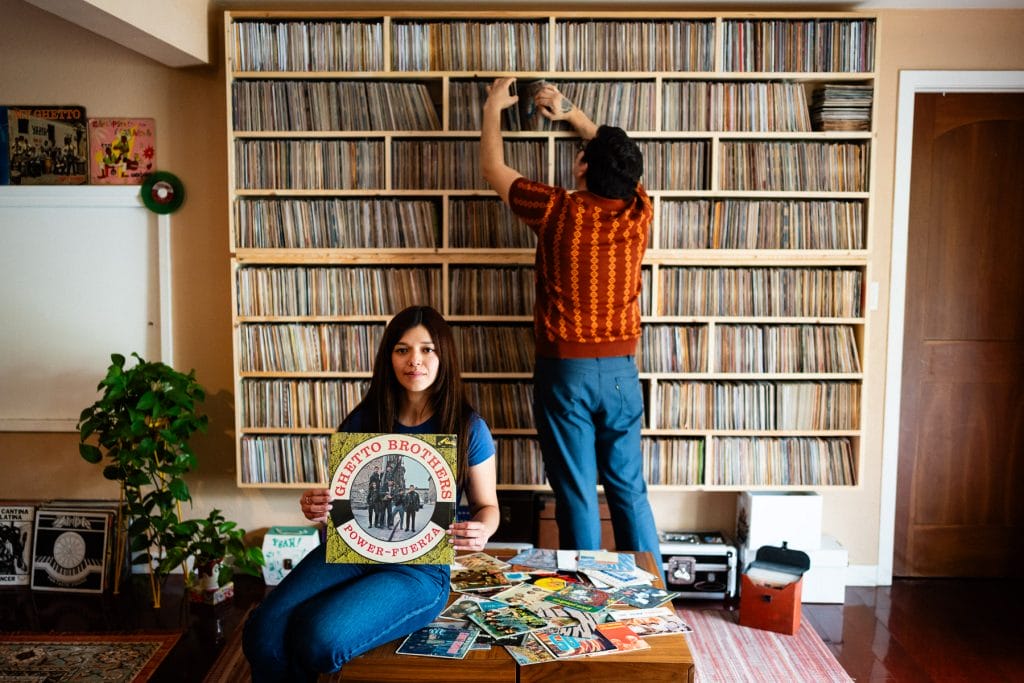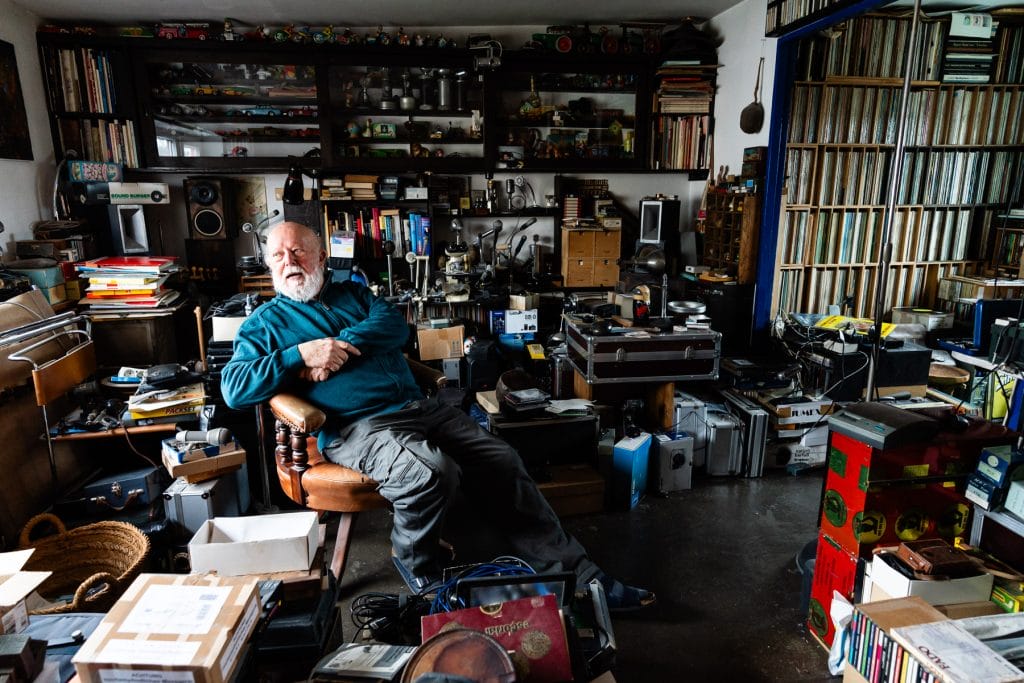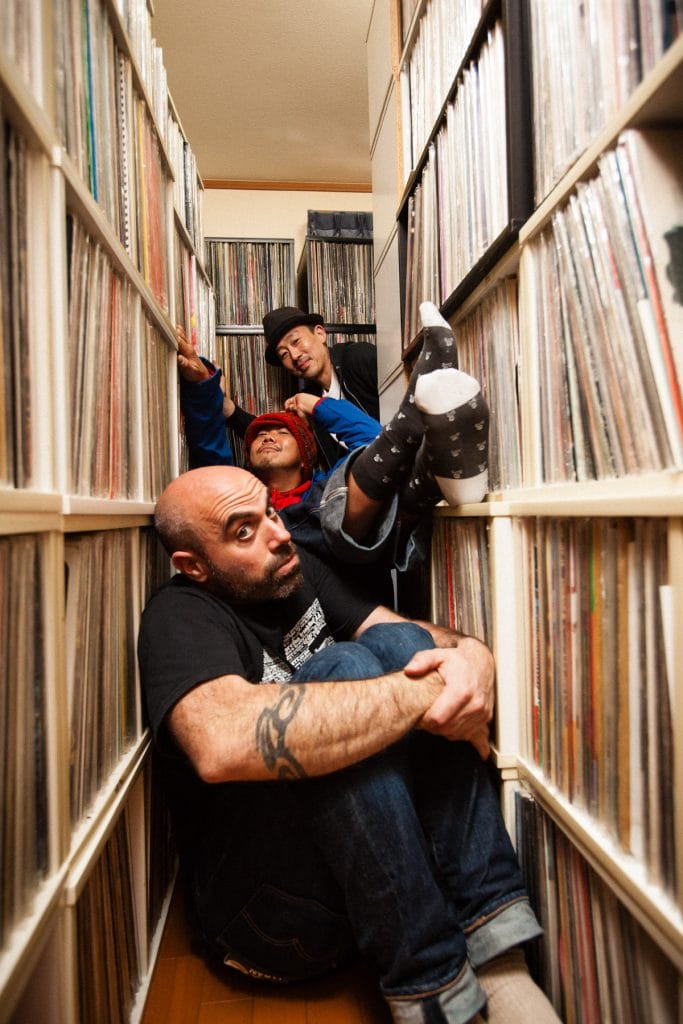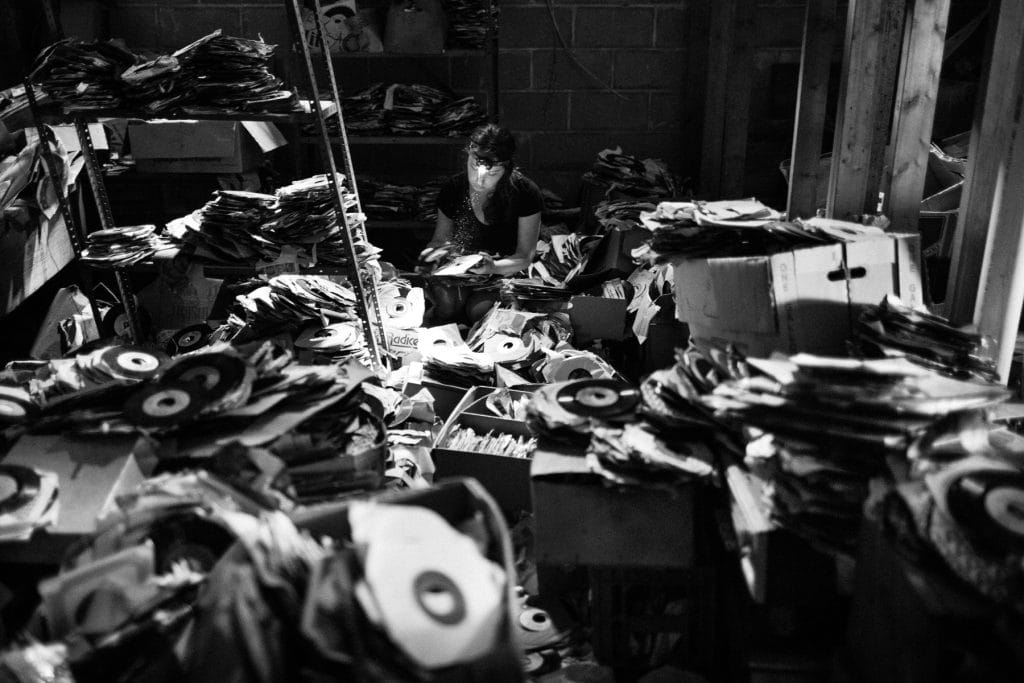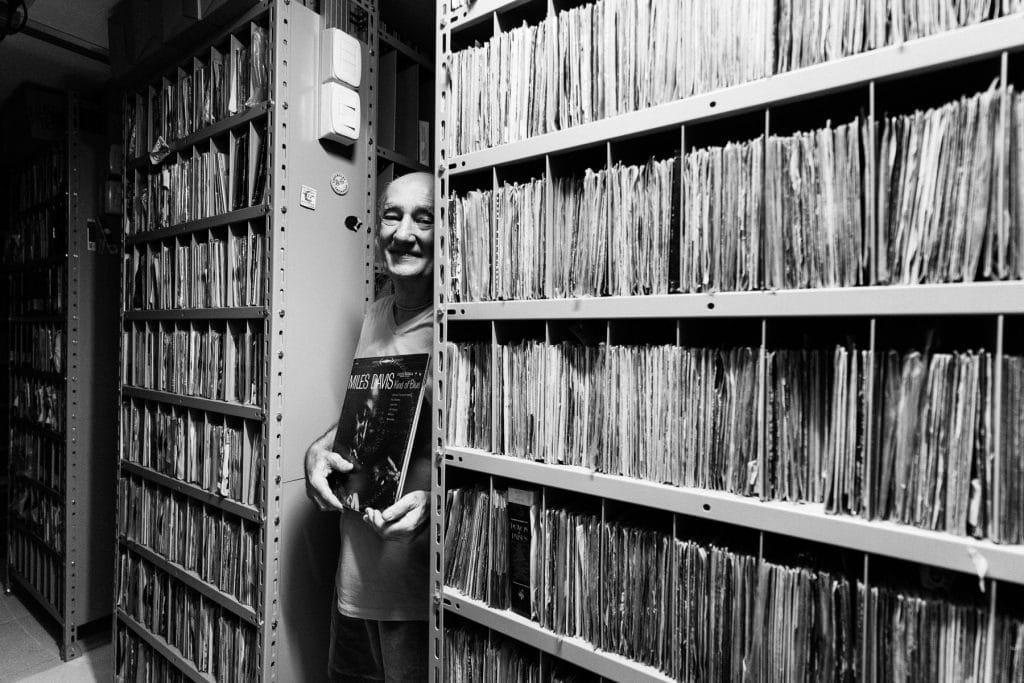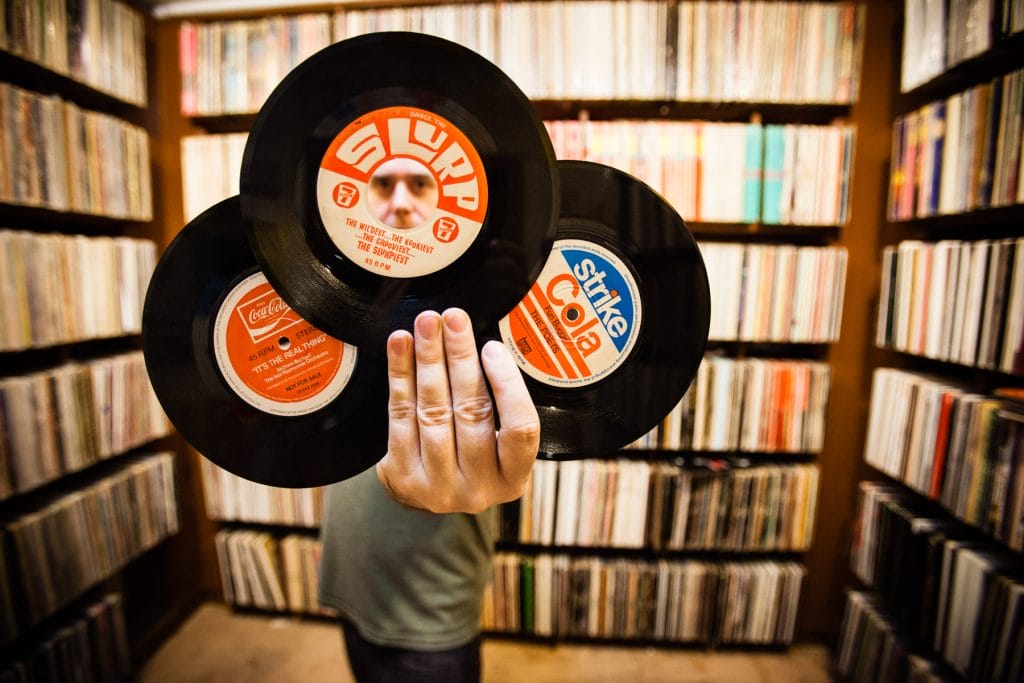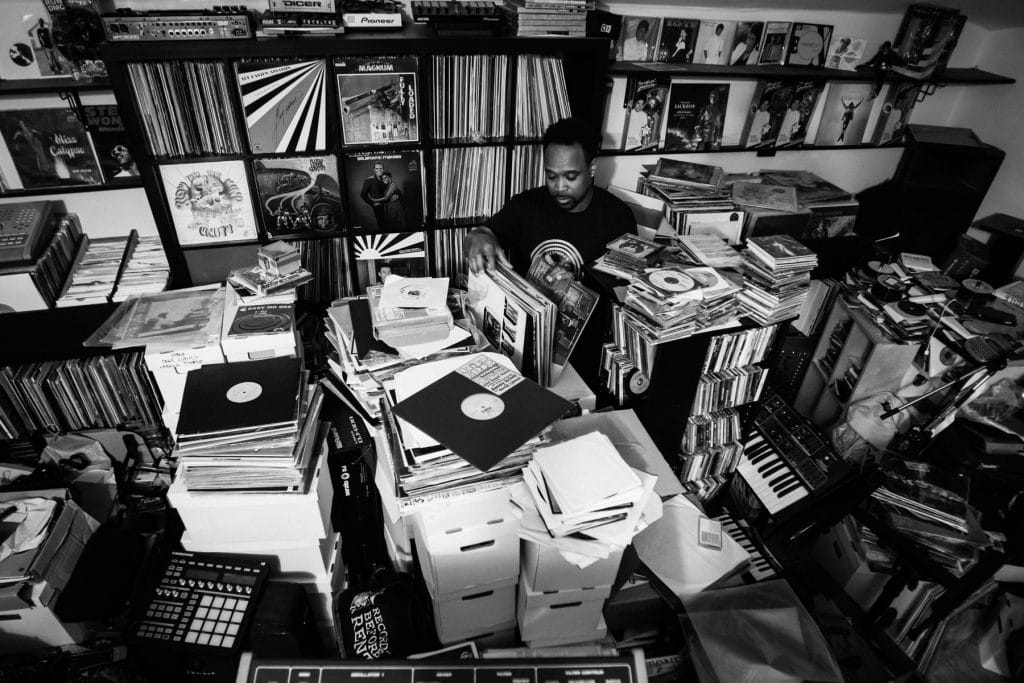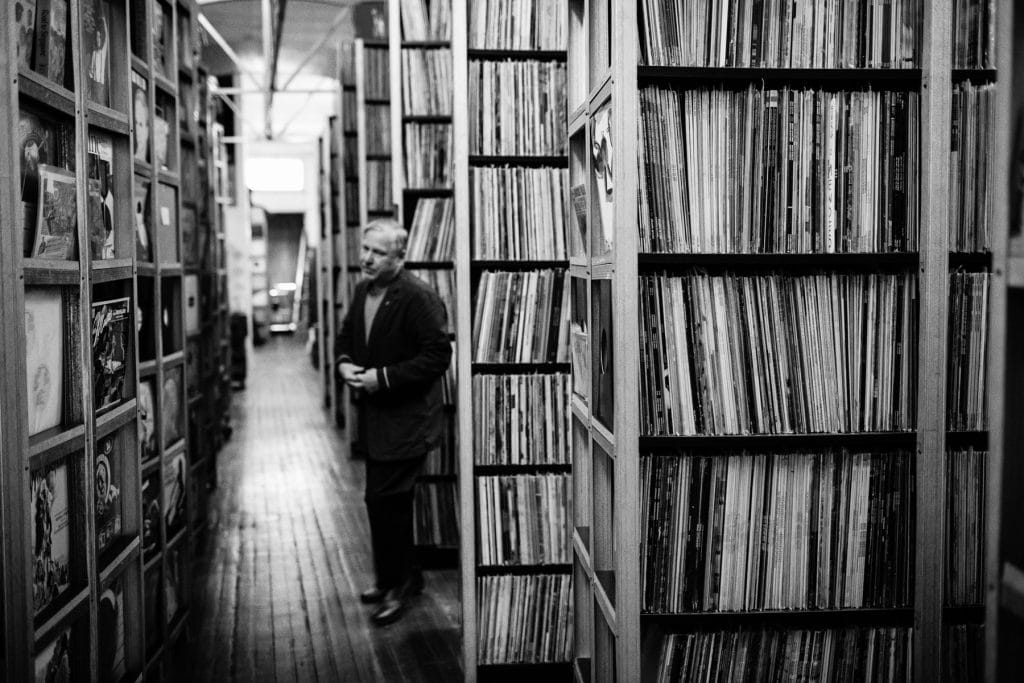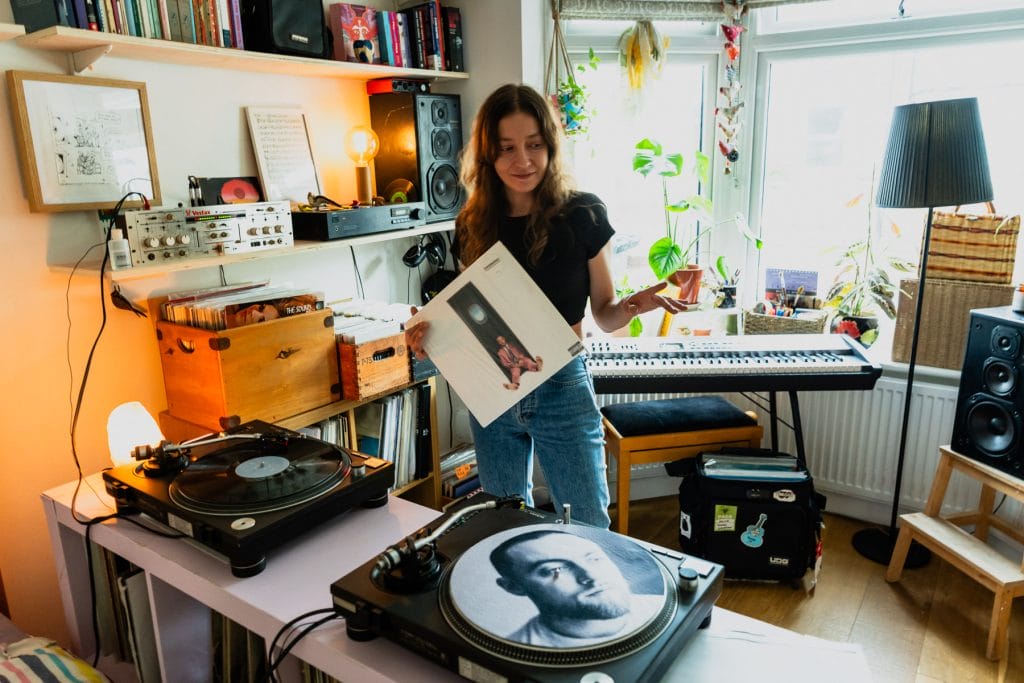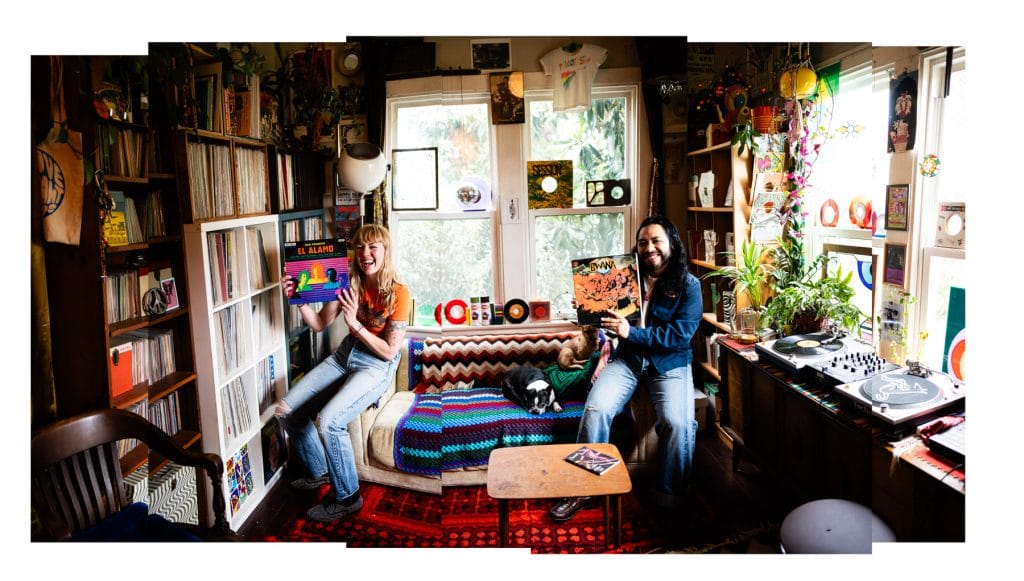If you are looking for a coffee table book that inspires and documents some of the coolest vinyl collectors on the planet, this is the stop you want to get off at.
If you’re a vinyl collector, music photographer, crate digger, analog romantic, or simply someone who finds magic in the ritual of putting the stylus to wax, then Dust & Grooves is either already in your life—or soon will be. Created by photographer and visual storyteller Eilon Paz, Dust & Grooves started as a personal passion project, documenting vinyl collectors in their natural environments. What began as an attempt to stay creatively engaged during a transitional period in his life has since evolved into one of the most beloved and visually captivating archives of vinyl culture.
The first volume of Dust & Grooves dropped at just the right moment—before Instagram had turned every room into a curated display and before vinyl’s resurgence went fully mainstream. Through his intimate photographs, genuine rapport and conversations, Paz pulled back the curtain on a hidden world of vinyl collectors. His lens captured not just the collectors and their vinyl, but the stories behind them. Each collection has a different musical fingerprint, sonic library, and emotional time capsule, unique to its owner and often showcasing rare grooves that might not be assembled anywhere else in the world.
Now, more than a decade later, Paz returns with Dust & Grooves Vol. 2: Further Adventures in Record Collecting, an even deeper and more global dive into the rich tapestry of record collecting. It’s a follow-up that doesn’t just add to the story—it reframes it, expanding the view to include more women, more global voices, and a broader lens on what it means to collect music today.
Complementing this sequel is a funky visual detour: Dust & Grooves: Portables, a companion book that celebrates 222 vintage portable turntables. These unique little machines, which once accompanied diggers and DJs on their hunts and filled children’s bedrooms with sound, provide a fun historical trip through vintage design and nostalgia.
Together, the two books form a love letter to analog culture—one that’s tactile, timeless, and still very much alive. To delve deeper into this ever-evolving world, Magnetic Magazine’s David Ireland sat down with Eilon Paz to discuss his journey, the evolution of his project, and what it means to capture the heartbeat of music.
Q&A Interview: David Ireland with Eilon Paz
David Ireland: Let’s start off kind of in your early career. Going back to probably 2008, you were a photographer by trade and you kind of stumbled into this. Can you tell us a little bit about how you wandered into the world of record collectors and vinyl?
Eilon Paz: All right. Well, I was always a vinyl person. You know, I grew up in an era where vinyl was the only format, and then, of course, tapes—cassettes. So yeah, I grew up in Israel and became a photographer at a really early age. It started as a hobby, and then I realized that I’m pretty good at it. So I just continued doing it, and it became a profession.
So I built a career living in Israel, but then I hit a ceiling—a glass ceiling. I was focusing on travel photography, portraits, and music photography. Music was always there. I always wanted to be close to it and surround myself with it. Around 2008, I decided—at age 33—that if I didn’t make a move now, it would be too late. So I packed my things and moved to New York. Of course, 2008 was the big recession, so probably the worst time to move to the U.S. and try to start a new career.
I sacrificed a lot. I moved away from my home, friends, family—and I landed in a city where there was nothing for me. And I guess starting Dust & Grooves was just a way for me to justify my move and stay busy—keep from falling into depression. I started looking for personal projects, and that’s how it began.
David Ireland: Interesting.
Eilon Paz: I never had any intention to make a website or a book. It was just a personal photography project. The vinyl scene in New York really inspired me. That was before the big resurgence.
David Ireland: Yeah. Like, A1 Records was still around. Other Music, maybe?
Eilon Paz: A1 is still around. And I’d see people hanging out on the streets, selling records. Tons of record stores—stuff I’d dream about getting in Israel. Records I could barely find there were in the $1 bin here. It was only when I met Frank Gossner that things really kicked off. I read about him in the Village Voice. He’d been digging in Africa, and there was this photo of him sitting somewhere in Ghana, surrounded by records, casually holding an AK-47. That image grabbed my attention. haha.
He was living in New York so I reached out and said, “Hey, expat to expat—would you be down to meet for coffee?” I had nothing to show, just my photography portfolio and enthusiasm. He took me around the East Village. First stop was this Brazilian store—Tropicalia in Furs, run by Joel Stones.
That’s where the project really started. Joel had amazing vibes. He was super supportive. We did a quick session there—not really what I envisioned, because I wanted to shoot in private rooms—but it was a perfect start.
Joel connected me to his friends, his customers. The project basically started in that community. And then the first profile I shot in a private room was Cosmo Baker. He’s a DJ I’d met on a previous trip to New York and we had that Jewish connection, he was open to it. That was the first profile on Dust & Grooves. I sent him a Q&A and some photos to caption. When I posted that on Facebook, that was it. That was when Dust & Grooves really started.
David Ireland: Yeah, the Rub parties were a big deal at the time.
Eilon Paz: Right? I got lucky. People saw Cosmo’s room—this was pre-Instagram, pre-social media. People didn’t share like that. Collectors hung out at record stores or forums, usually under pseudonyms. No one really knew what these record rooms looked like. That was something I accidentally revealed—just trying to shoot collectors and discover new music. One person led to another, and it expanded fast.
David Ireland: Six years later, you’ve got this massive coffee table book. It started off in a digital landscape—how did the idea for a printed book come about?
Eilon Paz: Honestly, it was community-driven. People kept asking for more—sending me photos, pitching themselves. It gained inertia. At first, I’d just hang out, shoot a few records, and send a Q&A. But as readership grew, I had to step it up—started hiring music writers.
Every time I traveled—on a job, visiting family, wherever—I’d schedule photo shoots. That’s how I got collectors in Turkey, Paris, Belgium, etc. One day, someone messaged me on Facebook and said, “You should make a book out of this.” I wasn’t confident I had enough material, but it stuck in my head. Eventually I laid out 50–60 of my best photos as 5×7 prints on a big table. When I saw them all together, I knew I had it.
I launched a Kickstarter campaign to fund a cross-country road trip to find America’s greatest collectors. We hit our goal in two weeks. Press came from The New York Times, The Guardian, Washington Post—it blew up. After that trip, I did others: the UK (which provided the iconic cover with Mr. Scruff on it), Japan, and back to Ghana with Frank to document his last digging trip in Africa.
David Ireland: And then you stepped away from vinyl for a bit. But something brought you back for Volume Two. What was the motivation?
Eilon Paz: Yeah, after photographing 120+ collectors, I needed space. I dove into another book project—Stompbox—about guitar pedals. Super nerdy too. After four years, that was done, and I looked back at Dust & Grooves. The brand was still alive. The book was in its third edition with a big publisher. But I was scared—Instagram ruled, vinyl was mainstream, and I knew I wouldn’t have that same “wow” factor with Volume Two.
So I knew I had to dig deeper. Find new stories. Get more women in it. That was important in both volumes, but I focused even more on it for Volume Two. The community kept asking about it, and that gave me the confidence to go ahead. Still a big financial risk—but it paid off.

David Ireland: And this time you added a companion book on portable turntables. What was the inspiration?
Eilon Paz: That came from photographing a collector named Paola Puente—she’s known for her vinyl and her amazing portables collection. We shot her main collection for Volume Two, then spent another day on her portables. That spiraled into a fun, easy side project. Like with Stompbox, I realized the artifacts around the culture are just as important and visually striking.
David Ireland: What’s the weirdest or most unexpected place you discovered a collector?
Eilon Paz: That’s a tough question. During the Volume One road trip, Cool Chris from Groove Merchant tipped me off about Mickey McGowan in San Jose. He has this museum of records and curiosities called The Unknown Museum. A quadrophonic setup, walls 25 feet tall stacked with vinyl, psychedelic stuff everywhere. He even played us a quadraphonic record of cricket sounds. It was mind-blowing.
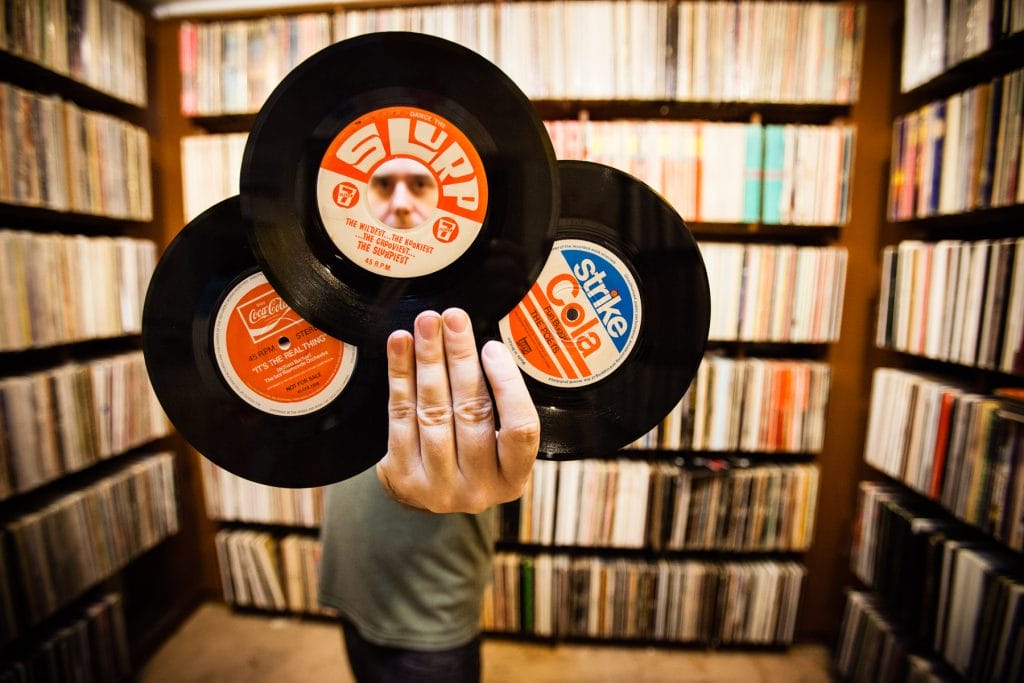
David Ireland: What’s the first thing you look for when you enter a collector’s room—not photographically, but emotionally or intuitively?
When I step into the room I don’t even pull out the camera. I keep it casual—small camera, no lights. Build intimacy. I usually ask, “What’s playing right now?” or “What’s something you’ve played recently?” It gets people talking. Then we just sit and listen. That always works—even with shy or self-aware subjects.
David Ireland: Do you think vinyl collecting is a form of modern anthropology?
Eilon Paz: Totally. Most collectors are friendly geeks—music nerds. They have deep curiosity, attention to detail. They don’t intend to be archivists, but they are. Every collection reveals something personal. I try to remember at least one record from each session as a way to build my own understanding of music.
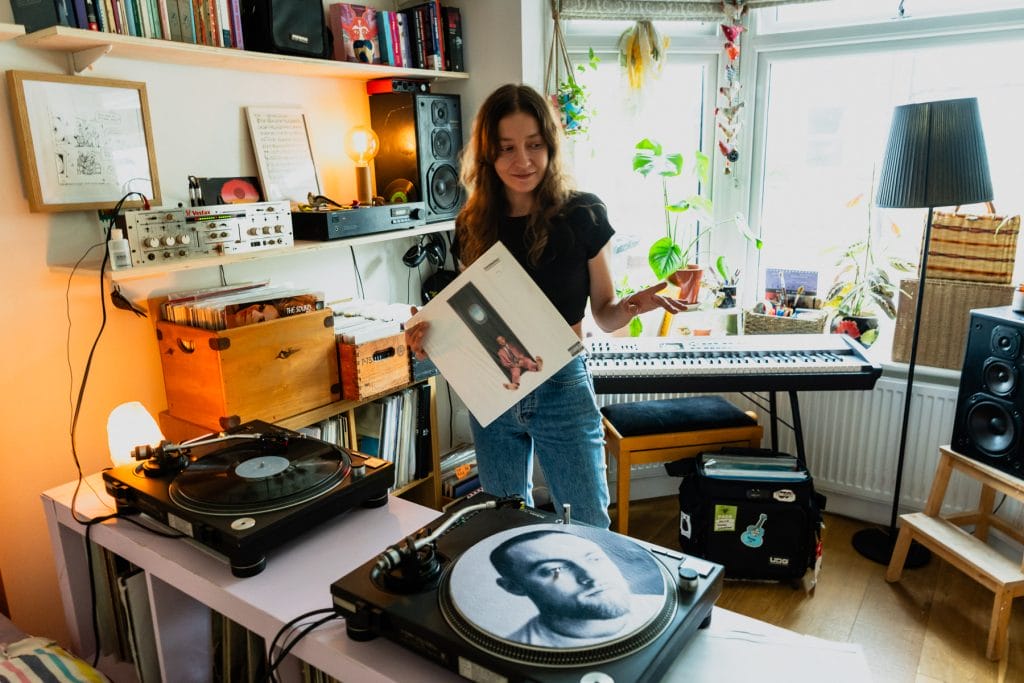
David Ireland: What does a record collection reveal that Spotify never could?
Eilon Paz: The tangible aspect. Liner notes, photos—it’s all there. But more than that, the collection is in front of you all the time! You remember where you got every record. Spotify has everything, but the paradox of choice is real. Record collections are personal, curated, and emotional.
David Ireland: Your portraits feel cinematic. How do you approach lighting when surrounded by walls of wax?
Eilon Paz: I try to use natural light as much as possible. I ask ahead if there’s good light in the room. Digital cameras today don’t need much light. I almost never use flash. That intimacy—that’s what I’m after. I work with what I’ve got. Almost always use a 35mm or 50mm prime lens. Rarely go wide angle. That’s how my collage style evolved—working in tight spaces.
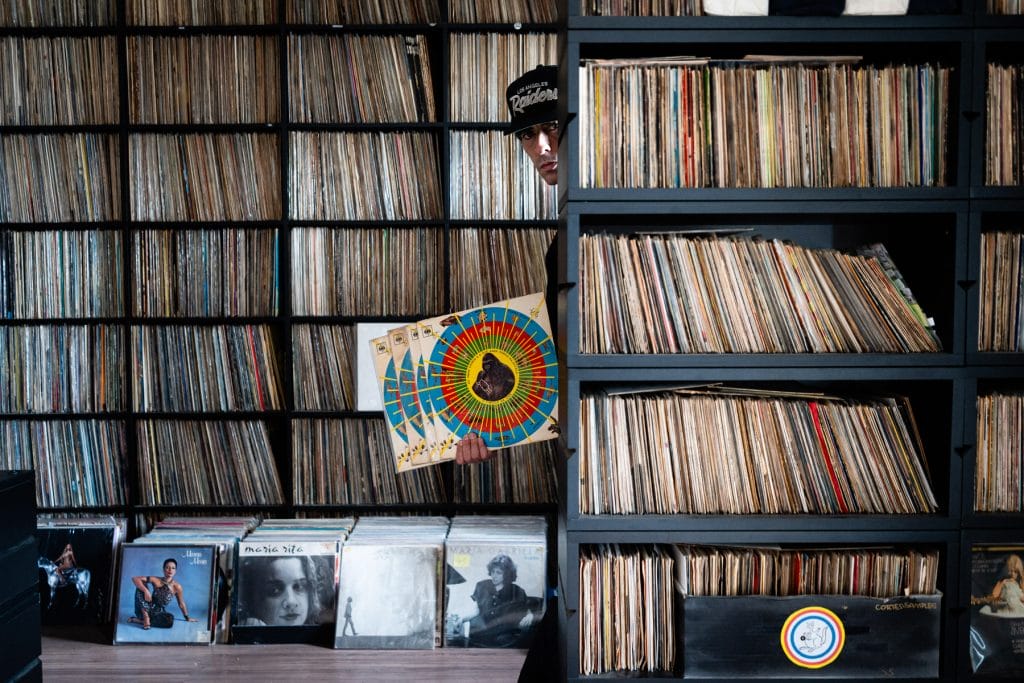
David Ireland: Final question: If Dust & Grooves had a soundtrack, what’s one track that has to be on it?
Eilon Paz: Wow. That’s tough. But maybe Roy Ayers—”Life Is Just a Moment.” Something groovy, with dust in it. Something that avoids pop and feels lived-in. That’s what Dust & Grooves is about.
David Ireland: Perfect answer. Thanks, Eilon.
Eilon Paz: Pleasure, man. Great questions. I enjoyed it.

With Dust & Grooves, Eilon Paz has created more than a photo book—he’s captured a culture. These volumes go beyond the act of collecting; they spotlight the people behind the crates, the love behind every sleeve, the history behind every groove. Volume 2 adds depth and diversity, while Portables reminds us that even the gear has its own soul.
Together, they’re a celebration of everything that makes vinyl magical: the feel, the sound, the hunt, and the community. In a world where music has become invisible and algorithm-driven,
Dust & Grooves gives us something we can see, hold, and feel. It reminds us that music, like memory, is better when it’s tangible.
Whether you’re a lifelong digger or new to the format, these books are an invitation—to slow down, to listen more deeply, and to rediscover the joy of music made physical.
More information about Dust & Grooves Here
The post The Essential Coffee Table Books For Vinyl Lovers: Dust & Grooves – An Interview With Eilon Paz appeared first on Magnetic Magazine.




